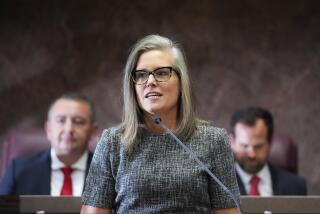Tested in Chile, Vouchers Produce No Clear Gains
- Share via
School voucher proponents are racking up impressive legal and political gains these days. Even when the voucher movement appears to lose, as it did in Ohio last week, it can actually claim a victory.
The Ohio Supreme Court killed a program that was diverting more than $5 million annually from the public school budget to enable 4,000 Cleveland children to attend private, mostly religious, schools. But the court’s ruling primarily involved accounting procedures. Indeed, the court explicitly said the Ohio program did not breach the constitutionally required separation of church and state.
Yet even as vouchers have gained ground--most recently in Florida, where the Legislature approved a statewide voucher program--there has been little more than speculation about their potential educational impact.
But Stanford University education professor Martin Carnoy has data that he says show what is likely to happen if vouchers spread widely. The data come from Chile, which has had a nationwide voucher system since 1980.
Inspired by the work of Nobel Prize-winning American economist Milton Friedman, the Chilean government decided to finance education by letting money follow pupils. The government began sending a certain amount of money for each student in a “municipal” school--the equivalent of a public school--to the local government. Private schools that agreed not to charge tuition also received government money for their students.
Confirming the fears of American public school educators, about 20% of Chilean students have since moved from the public sector to the private sector. Although enrollments in preexisting private schools have grown, the biggest shift has been to new institutions that Carnoy calls commercial schools. Those schools sprang up in response to the government’s voucher program and now serve more than one in five students.
So how do students in the different types of schools perform? Carnoy and his research partner, Patrick J. McEwan, had access to extensive performance data because all Chilean students are tested in grades four and eight to help parents choose where to enroll their kids. The researchers also had important background information about students’ family income and their parents’ educational level.
Using statistical techniques to control for the effect of such characteristics, they found that the test scores of students in religious schools were about 3% higher than those of their public school counterparts. The scores of the students in public schools, however, were slightly better than those in commercial schools.
The public schools also tend to have smaller class sizes. But Carnoy said that neither the test scores nor the class sizes seem to matter to higher-income parents as much as having their children attend school with others who are like them. Social distinctions, it seems, trump the relative effectiveness of a school.
Lower-income parents in Chile, it turns out, make a similar choice. That means they are less likely to opt out of public education. Whatever the motivation, the effect is that, as U.S. critics of vouchers have predicted, the public schools there end up serving students who are poorer and less able.
What about the positive effects of competition on public schools? To get a reading on this, Carnoy studied areas with greater concentrations of private schools. Theoretically, more schools would intensify the battle for market share, producing higher performance.
If that occurred, it was undetectable, Carnoy said. The public schools might have improved, he said, but if they did, the impact was wiped out by the loss of students with higher incomes and test scores.
“If market accountability is what makes schools good, then it should work the same in Chile as in the U.S.,” Carnoy said. In Chile, though, it didn’t.
What did produce results, Carnoy said, was a government program that provided more money and training to the nation’s 900 lowest-performing schools, regardless of whether they were public or private. That impact, Carnoy said, is significant and “grows larger with time.”
Given his research, you might think Carnoy would be an ardent critic of vouchers. He’s not. But he does think government vouchers for private schools ought to be limited to low-income families. And he thinks the government should issue only as many vouchers as there are seats available in established private schools--to discourage opportunistic entrepreneurs.
Identifying himself as a “dyed-in-the-wool liberal,” Carnoy acknowledged that the voucher issue puts him in a tough spot. He knows better than most, based on his research, that vouchers are not likely to fix the ills of public education. Even so, he said, parents whose children attend failing public schools ought to be able to flee.
More to Read
Sign up for Essential California
The most important California stories and recommendations in your inbox every morning.
You may occasionally receive promotional content from the Los Angeles Times.













